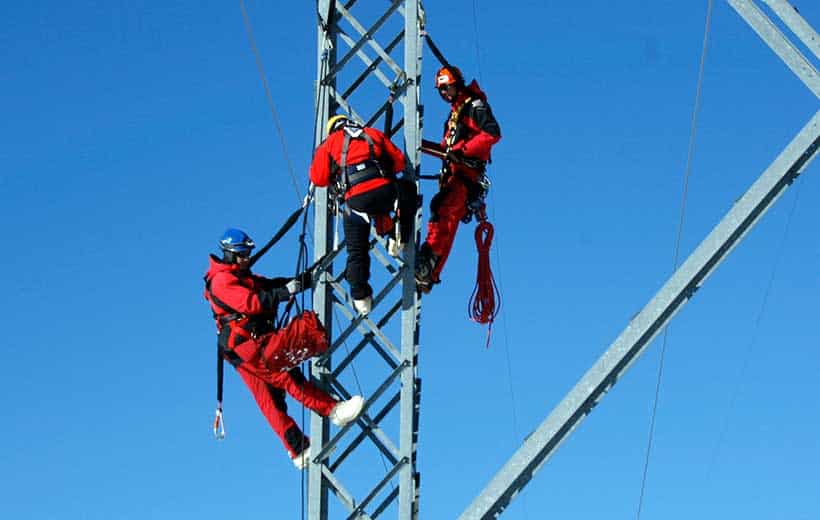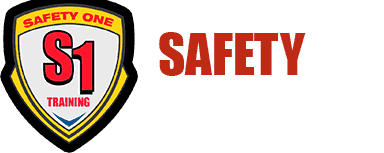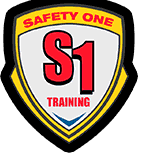
03 Jun Tower crew better at rescue than fire department!
A recent Wireless Estimator article titled “Recent rescue raises concerns about climbers’ ability to rescue their fellow workers” posed several interesting questions about the current knowledge level of cell tower climbers and their ability to perform a tower rescue if the need arises. Despite current industry standards which require tower climbing and rescue training for all tower climbers, there has been a recent trend of tower climbing crews relying on the fire department to perform a rescue when an actual emergency develops. There are several important questions posed by the article that are worthy of further discussion.
Why are tower climbers not rescuing their own people? Despite the fact that all climbers in the industry should be trained in emergency procedures and discuss a rescue plan daily, the current perception is that when things go wrong, such as in the event of a of a tower fall or any of a number of disabling health issues, crews do not act in accordance to their training. Instead, they rely on 911.
In answer to this question, we first must decide if it is true that the majority of climbers choose not to participate in real tower rescues, or if it is actually just a perception based on what information makes it into public discussion. Stories we hear from our clients regularly lead us to believe that tower crews actually are performing rescues with a lot more frequency than most people believe. When a rescue is actually executed in the way it was trained and practiced the rescue typically does not take as long as when first responders are the ones to perform the rescue. When fire fighters perform a tower rescue, the process often takes two to three hours or more. This is plenty of time for media and bystanders to gather and document the situation. In contrast, with a responsible tower crew in a remote area there is likely to not be any photographic evidence that a rescue took place, since the crew was busy focusing on solving the problem and not on their cell phones documenting the incident. In our current media culture, a lack of photographic or video documentation often leaves a story not worth telling.
We also must acknowledge that crews may not always be willing to come forward with information that a rescue took place, due to the risk of legal or financial repercussion to the employer. Despite the fact that the industry as a whole can learn from any and all emergency situations experienced by other crews, there is always the concern of a damaged reputation, OSHA attention, or simply injured pride by admitting the situation occurred in the first place.
Why are trained tower climbers not comfortable performing a rescue? If current industry standards are followed, all climbers on site should have a valid tower climber certification which means they demonstrated the ability to successfully rescue a coworker in order to receive certification. So why do they not act? There are several possible answers to this question.
All tower climber certification training includes a crash course in rescue. However, it is exactly that. A crash course. Regardless of how much time a company may be willing to have their workers tied up in training, even the most extensive rescue course is nothing more than a conveyance of knowledge. In order to become proficient and comfortable at performing a rescue a climber needs to practice rescue on a regular basis. A lot of repeat students we see have not practiced or discussed rescue since we taught them two years prior. Despite the ANSI requirement of rescue practice at least once a year, it simply does not happen for a lot of crews. Even if it did, once a year is not often enough for most climbers to truly be proficient with a rescue when the actual emergency occurs.
Additionally, it is important that rescue training and practice is focused on realistic, difficult scenarios. Often during rescue practice the repeat scenario used is too easy. For example, it is not uncommon when a rescuer is failing during practice for the patient to help out by standing up on the tower or moving around to help. This is not realistic for an unconscious patient. It is also not uncommon for a rescuer to fail at properly executing a rescue in practice, yet walk away with the attitude of “close enough, I could do it in a real situation.” In reality, rescues need to be practiced to perfection, since the rescuer’s performance will likely decrease during the real event due to stress, fatigue, and adrenaline.
It is important during rescue practice that you do not only practice the easiest scenario. It is best practice to focus on the most difficult scenarios. If you practice until the most difficult scenario becomes easy, then a real rescue will be well within your skill set.
Why are peers a better choice than fire fighters? If we are going to question why tower climbers are not rescuing their own peers, then we must also ask why that expectation exists in the first place. Ultimately, fire fighters handle a much wider variety of emergency situations than just fighting fires. However, despite the diversity of their job, they climb towers on extremely rare occasion. Even rescue crews with high angle rescue training rarely apply their knowledge to the tower environment. Tower climbers, on the other hand, spend a great deal of time on tower regularly. A tower climber should have a much better understanding of proper anchor points and movements on a tower, simply because they have a lot more experience in that environment. When a fire fighter approaches a foreign environment, it is their responsibility to assess the situation and understand the hazards before entering. This is a step that a regular and certified tower climber has already addressed through experience and a job hazard analysis.
We must also acknowledge that tower crews in most places spend a great deal of time in remote locations. Even if cell phone communication is reliable, it could still take a great deal of time for the first responders to arrive on location. In some rescues, time is critical. In an ideal world a well-trained tower crew should have the rescue well underway, if not completed, by the time first responders arrive on scene. This is in the best interest of the patient.
Trained medical personnel and workers trained only in first-aid/CPR have different priorities and expectations. It is very difficult to perform CPR on a tower. In most cases, it is best to get the patient to the ground as soon as possible where trained medical personnel can take over care. If a fire fighter arrives to the patient first, as a trained medical professional, they must follow different protocols. It is their duty to stabilize the patient first and address any and all injuries before moving the patient. This takes a lot more time, and can delay transport to a medical facility.
A well trained tower climber should be ready to act promptly, have a rescue plan and equipment in place, and have practiced it regularly. This results in a tower crew that is far more efficient at tower rescue than a fire department could ever hope to be. It is important to keep in mind that this is only possible through detailed training in realistic and difficult scenarios, regular and accurate practice by tower climbers, frequent rescue discussions and planning, and the presence of the proper equipment when an emergency arises.


Bill
Posted at 15:47h, 09 JanuaryAn interesting perspective on preparedness – thanks for sharing!